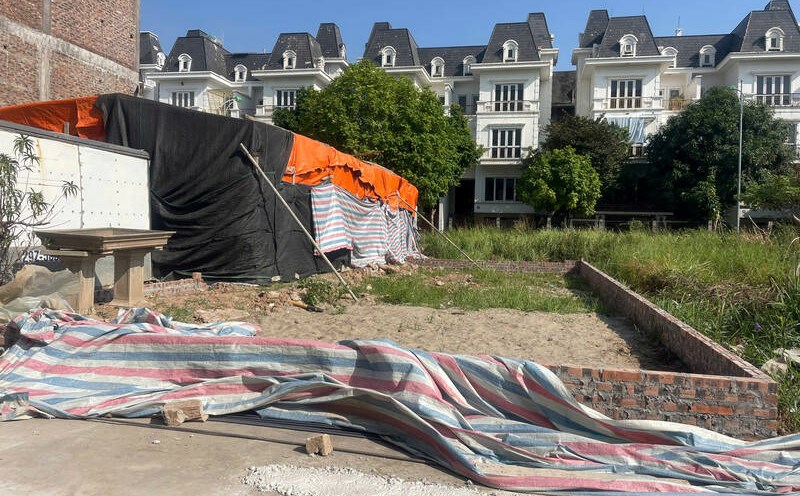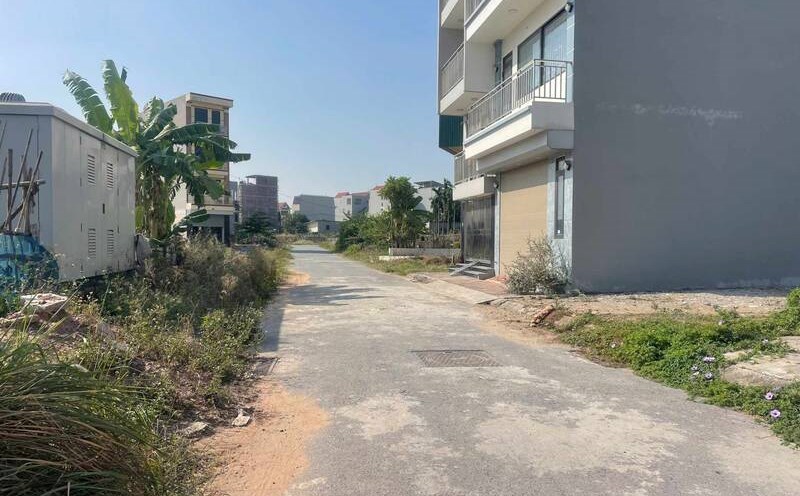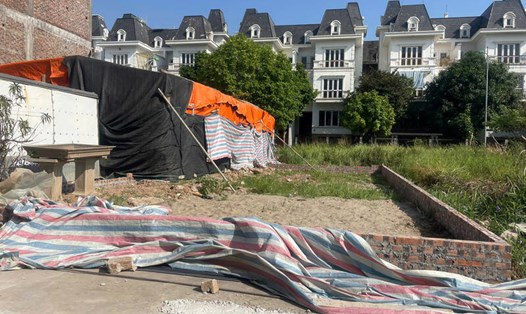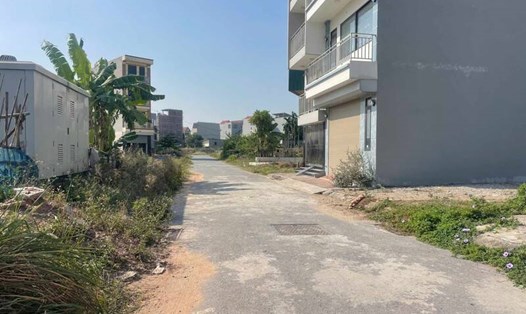Since the end of 2024, the real estate market has recorded many positive signs thanks to a series of support policies and the recovery of economic sectors. However, instead of focusing on high-end projects or apartments in the city center, cash flow is shifting strongly to the low-cost land segment in suburban areas and neighboring provinces.
According to investors, cheap land has a big advantage thanks to low initial investment capital, good liquidity and little impact from macroeconomic fluctuations.
Mr. Nguyen Van Hoa, a real estate investor in Hanoi, shared that in 2021 he decided to buy an 80m2 plot of land in Nguyen Khe, Dong Anh for 1.5 billion VND.
“At that time, I was also worried because this area was not yet developed much, surrounded by mostly vacant land and village roads. But the cheap land price and clear legal status were the reasons why I decided to put down my money.”
By the end of 2024, when a number of mega-urban projects were built and large infrastructure projects were implemented, the price of Mr. Hoa's land plot skyrocketed to VND3.2 billion, an increase of more than 110% in just 3 years. He decided to sell this plot of land and buy another plot in Soc Son for just over VND1 billion, while continuing to look for areas with cheap land prices, in order to take advantage of the price difference for reinvestment. "Cheap land is like a long-term accumulation, with no pressure on cash flow and the potential for great profits when the area develops," said Mr. Hoa.
Regarding the current trend of searching for and investing in cheap land, Mr. Le Tuan Anh, a real estate broker in Hanoi, explained that cheap land is attracting strong cash flows from individual investors for many reasons. According to Mr. Tuan, this is a segment with low prices, low risks, suitable for small individual investors and those who do not want to use financial leverage.
"Areas like Soc Son, Chuong My or Hoa Binh currently cost only 15-30 million VND/m2, with initial investment capital often below 2 billion VND. Compared to high-end segments, this is a safer and more liquid choice," said Mr. Tuan Anh. Second, the increasingly developed transport infrastructure helps land values, especially in areas near Hanoi, increase rapidly in a short time.
Not only attractive to individual investors, cheap land also attracts customers who buy for real residence. Ms. Lan Anh, a customer who recently bought a 100m2 plot of land in Luong Son (Hoa Binh) said: "The land I just bought costs only 18 million VND/m2, half the price of residential land in Ha Dong, and has an open space. I plan to build a house in a few years."
However, not all cheap land plots are “bargains”. Mr. Le Anh Tuan recommends that investors pay special attention to legal and planning factors.
“Plots of land with unclear red books, located in suspended planning areas or without infrastructure connections will be very risky, even a total loss. Therefore, investors should choose areas with available basic infrastructure, complete legal documents and clear development potential."
Commenting on the current land market, Mr. Pham Duc Toan - CEO of EZ Real Estate Investment and Development Joint Stock Company (EZ Property) - said that currently, some investors have begun to shift their investment trend to provinces and cities with good economic growth, synchronous infrastructure and relatively low prices with the expectation of future price increases.











